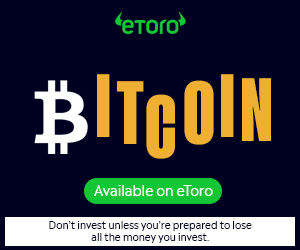
Blockchain technology has given rise to some of the most significant innovations today. However, there are some hurdles. Most public blockchain networks struggle with scalability, interoperability, and privacy. One of the issues this presents is that projects built on them experience slower transaction settlements, which result in higher gas fees.
Table of Contents
HeLa Chain, a layer-1, modular blockchain, addresses all these issues by taking a different approach. It harnesses artificial intelligence, a fiat-backed stablecoin, and a modular architecture to enhance the interaction between the real world and Web3. This article discusses the details of how the HeLa Chain operates and its key features.
What is the HeLa Chain?
Developed by the HeLa Labs, the HeLa Chain is a layer-1 modular blockchain that aims to provide greater flexibility and scalability to its users.
Modular blockchains are designed to address blockchain scalability issues by dividing tasks, such as consensus, security, and transaction execution, among various components or layers. This way, each layer can perform its task more efficiently than a monolithic blockchain. HeLa Chain’s modular architecture comprises the following:
- Asset Integration Layer: This layer facilitates the seamless integration of digital assets across the modular blockchain ecosystem.
- Execution Layer: This layer handles the processing of smart contracts, transaction settlement, and the use of HLUSD stablecoin as the gas fee.
- Consensus Layer: This layer caters to the blockchain network’s security and achieves consensus on the blockchain’s state. It will also handle HELA issuance, staking, and management of node identities.
- Storage Layer: As the name implies, this layer stores HeLa’s entire on-chain ledger and ensures data availability for the layer-1 blockchain.
- Guardian Layer: It cares for the integration framework that enables users to monitor the network, earn rewards, and interact with decentralized applications (dApps).
- AI Layer: This section provides access to on-chain AI functionalities, stores trained and raw AI data, and offers a decentralized graphics processing unit (GPU) resource for computational purposes.
Other selling points for the HeLa Chain are its consensus mechanism and programming languages. The modular blockchain uses Tendermint as its consensus protocol. Hence, it features Byzantine Fault Tolerant (BFT) and Proof-of-Stake (PoS) protocols. The blockchain uses Go and Rust programming languages.
Key Features
HeLa Chain has several features that distinguish it from other blockchain networks, even those that implement a modular structure. Because of these features, the HeLa Chain believes it meets the Web3 ethos – decentralizing how users interact with the internet. Here they are:
Personalized AI
The layer-1 modular blockchain adopts artificial intelligence to meet individual needs. This way, users can develop intelligent and personalized on-chain applications. As of this writing, the HeLa Chain houses 22 AI projects building at the intersection of blockchain and artificial intelligence.
Fiat-Backed Stablecoin for Gas Fees
Most blockchains use a volatile cryptocurrency to settle gas fees. The issue is that the prices of these assets are unpredictable, and users may spend more than they expect to execute transactions. HeLa Chain changes the narrative by introducing HLUSD, a fiat-backed stablecoin tied to the US dollar. This stablecoin is used to settle gas fees. This provides users with a stable, low-cost, and predictable experience when transacting.
High Yield
Helmed by HLUSD, HeLa Chain provides sustainable and predictable yields for users. To participate, users must stake their HLUSD stablecoins on the Stake and Earn platform. Early stakers will get a big scoop of the blockchain’s upcoming airdrop. This rewarding mechanism is open to users and developers.
EVM Compatibility
HeLa’s integration of the Ethereum Virtual Machine allows users and developers to integrate and migrate dApps within the ecosystem seamlessly. To be EVM-compatible, the blockchain features a header that supports EIP-1559, a proposal that redefined how Ethereum’s gas fees are structured.
Decentralized Digital Identity (DID)
HeLa features a decentralized digital identity (DID) that grants users complete control over their on-chain identity. This helps to upscale security, privacy, and interoperability on the blockchain. Users can control their digital identifiers using the HeLa wallet. Developers can also fine-tune the DID management feature into their dApps, enabling them to oversee user identity across their platforms. The DID feature is applicable in fields such as credit lending, online ticketing, and other applications that require a Know Your Customer (KYC) assessment.
Pros
- Improved scalability.
- Allowance for enhanced customization.
- Overall network speed.
- AI integration.
- Usage of stablecoin for settling gas fees.
Cons
- Hela token has yet to launch at the time of writing.
- Increased complexity.
Conclusion
HeLa Chain brings blockchain technology and artificial intelligence into its ecosystem. Thanks to its modular architecture, the layer-1 blockchain offered improved flexibility and scalability to users and developers. While at it, the blockchain provides a lucrative stake to earn model tied with sustainable yield. Whether you're looking for a faster blockchain network, an AI-enabled interface, or high yields, HeLa Chain is worth considering.





 usdt
usdt xrp
xrp

